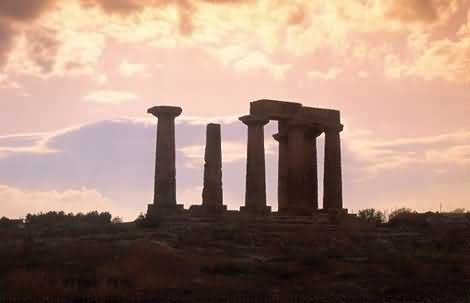Jars of Clay – 1
Thoughts on 2 Corinthians 4
One thing I have realised over the last few years is how little the New Testament is commonly taught in the context of God’s “worship economy.” This is mostly due to the fact that the destruction of the Herods’ temple—or at least its significance—doesn’t even register on most Bible college lecturers’ radar, let alone that of the average Christian. We understand why the temples of the pagan gods were abandoned. Do we understand that the Temple of the true God had become a synagogue of Satan?
Therefore, since through God’s mercy we have this ministry, we do not lose heart.
If you think giving this verse a Jewish context is stretching things since this letter was written to Christians in a Gentile city, read the preceding chapter.
Christianity was still in the shadow of Herod’s temple. Judaism was the ‘seen’ religion. All that Christianity seemed to have outwardly was eyewitness testimony and suffering. It was not a religion of flesh but of Spirit. It had no obvious glory. As Jordan observes, because God’s people don’t resort to oppression and exploitation (slavery and harlotry) for instant glory and affluence, God’s cities always take time to build. The Herods were resorting to these things exactly, and breaking Moses’ three laws for Israel’s kings as Solomon did.
Rather, we have renounced secret and shameful ways; we do not use deception, nor do we distort the word of God. On the contrary, by setting forth the truth plainly we commend ourselves to every man’s conscience in the sight of God.
Who is Paul comparing himself to here? Most likely, it is the Jews and Judaizers, hypocrites who had swapped mercy and justice for tithing their kitchen herbs. Paul returns to this theme later in the epistle, which might be an argument (a chiastic one) for its unity. The apostles’ lives matched their words. This view is supported by the next verse.
And even if our gospel is veiled, it is veiled to those who are perishing.
As he did in 2 Cor. 3, Paul refers to the Veil. It becomes apparent that this chapter is working through the Tabernacle pattern. We have had an Ark/Word that is not being distorted, and now the Veil.
The veil was torn, the Ark was opened. But the Jews sewed it back together again! Jesus was correct when He said they would not only refuse to enter through the kingdom doors, but hinder others from doing so as well. This Veil is what was vanishing away. It was a Covenant-firmament. Those who refused to enter into the Light would be taken along with their beloved Veil into outer darkness. [1]
The god of this age has blinded the minds of unbelievers, so that they cannot see the light of the gospel of the glory of Christ, who is the image of God.
What is the context of this letter? First century. The god of that age was Satan. The worship of God still had an earthly centre, but its rulers now belonged to their true father, the devil.
But Satan has now been bound. People are still blind today, of course, but the truth has been freed from centralised Herodian worship. In the literary structure, we are still in the Veil, in the darkness of Passover. Paul would also have been recalling his own blindness to the gospel until the light shined upon him. This moves the pattern to Ascension, Firstfruits — Christ as the image of God. This step is Moses on the mountain, and Paul has already spoken about Moses’ face being veiled.
Basically, Moses entered through the Veil on the mountain and was face to face with God (as Facebread). Moses became a human Tabernacle. Just as it was for the unbelieving Jews in Paul’s day, an OPEN Holy of Holies was intolerable. Without the Spirit of God, being face to face with the Law means death. So, just like those at the foot of Sinai, the Jews wanted Jesus’ face hidden. Paul tells us that Moses’ face-glory passed away. [2] But the glory of Jesus’ face is permanent, and we, by the Spirit, view it unveiled. We look boldly at the things that angels desired to look into. Ascension also corresponds to the third book, Leviticus, where Adam ascends, draws near to God, in a new Tabernacle.
For we do not preach ourselves, but Jesus Christ as Lord, and ourselves as your servants for Jesus’ sake.
Christians are merely signposts. Signposts are servants. They are not the thing signified, despite the fact that its name is written, engraved, and sealed with wax, on their “foreheads.” God is big on mediators. [3]
This moves the pattern from Ascension to Testing, preaching the Law received on the mountain to the people waiting below. The Head speaks the Law to the body. Will the body receive it?
Do many commentators deal much with the Jewish background in the “Gentile” letters”? A friend of mine studying at Moore College was surprised to hear a lecturer tell a student that one can’t understanding the Corinthian epistles without understanding the Temple. Perhaps things are changing, but I don’t recall hearing any sermons with this perspective since I became a Christian.
Paul wasn’t making general statements about the Christian life so much as opening the Old Covenant to these believers by the Spirit. Their Bible was the Old Testament and the apostle was their commentary.
_____________________________________
[1] See The End of Shadows.
[2] See Horns of Moses.
[3] See The Go-Betweens.


























